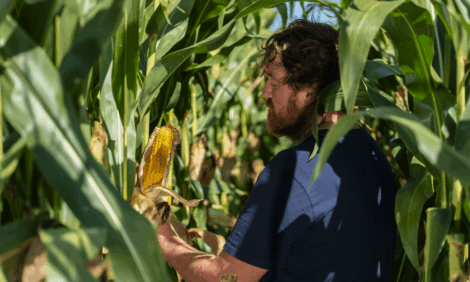



Effect of Trace Mineral Supplementation on the Reproductive Performance of Lactating Dairy Cows
A TEAGSC report looking into trace mineral presence in pasture based dairying examined the effects of slow release trace mineral (TM) boluses at varying times. The experiment, which surveyed five Irish farms, concentrated on low-input, pasture based herds where cows receivedIntroduction
Trace mineral deficiencies can arise in pasture-based systems where grazed pasture is deficient or imbalanced in one or more TM and concentrate supplementation is reduced as grass availability increases. The aim of this study was to examine the effects of administering slow release TM boluses at different timepoints on: (i) temporal patterns in blood indicators of trace mineral status; and (ii) effects on reproductive performance in dairy cows in seasonal calving pasture-based systems.
Materials and Methods
This study was a completely randomized experimental design that used 1,381 dairy cows on 5 dairy farms with low levels of concentrate supplementation (<500 kg per cow per year). Within each farm, cows were sorted on the basis of parity and expected calving date, and randomly assigned to one of four treatments: CTRL cows received no TM bolus; DRY cows received TM bolus at dry-off; BREED cows received TM bolus 6 weeks before planned mating start date (MSD); DRY_BREED cows received TM boluses at dry-off and 6 weeks before MSD. Cows were weighed immediately before bolus administration. Cows ?550 kg received two boluses at the time of treatment, and cows <550 kg received one bolus according to the manufacturers instructions. Each TM bolus contained 30 g Cu oxide, 3400 mg I, 500 mg Se, and 500 mg Co. Blood samples were collected (and plasma harvested) from 10 cows per treatment on each farm at 6 time points between dry-off and 6 weeks after MSD. Plasma samples were analysed for concentrations of Cu, Se and inorganic I (PII). Herd breeding records and ultrasound scanning results at the end of the breeding season were collated. Of the cows initially enrolled, 1311 were retained for analysis of fertility data. Blood TM concentration data were checked for normality, and treatment effects analysed using mixed model repeated measures procedures (SAS Institute Inc., Cary, NC). Treatment, time, treatment × time, parity and farm were included as fixed effects and cow was included as a random effect. Binary reproductive variables were analysed using the Chi-square test.
Results and Discussion
All the herds enrolled in this study were fed concentrate feed for longer than usual in early lactation due to poor pasture availability, thereby increasing the duration of postpartum trace mineral supplementation. PII (P<0.001) and plasma Se (P=0.03) were affected by TM treatment, but plasma Cu was not (P>0.5; Figure 1). PII concentrations were similar to untreated cows at 3 months after bolus administration. Fertility performance data are summarized in Table 1.
| Effects of TM Bolus on Reproduction Variables | |||||
|---|---|---|---|---|---|
| CTRL | DRY | BREED | DRY_BREED | P-value | |
| n | 352 | 340 | 335 | 339 | - |
| 21 day submission rate | 80.4 | 82.0 | 78.5 | 79.3 | 0.7 |
| Pregnancy rate to first AI | 51.0 | 52.4 | 53.3 | 53.7 | 0.9 |
| 42 day pregnancy rate | 66.1 | 65.9 | 64.2 | 70.7 | 0.3 |
| Final pregnancy rate | 86.3 | 87.0 | 88.0 | 87.9 | 0.9 |

Conclusions
The results indicate that TM bolus supplementation is unlikely to have a major effect on herd reproductive performance in well managed, low-input pasture-based herds where concentrates are fed until at least 3 weeks before MSD.
November 2012


